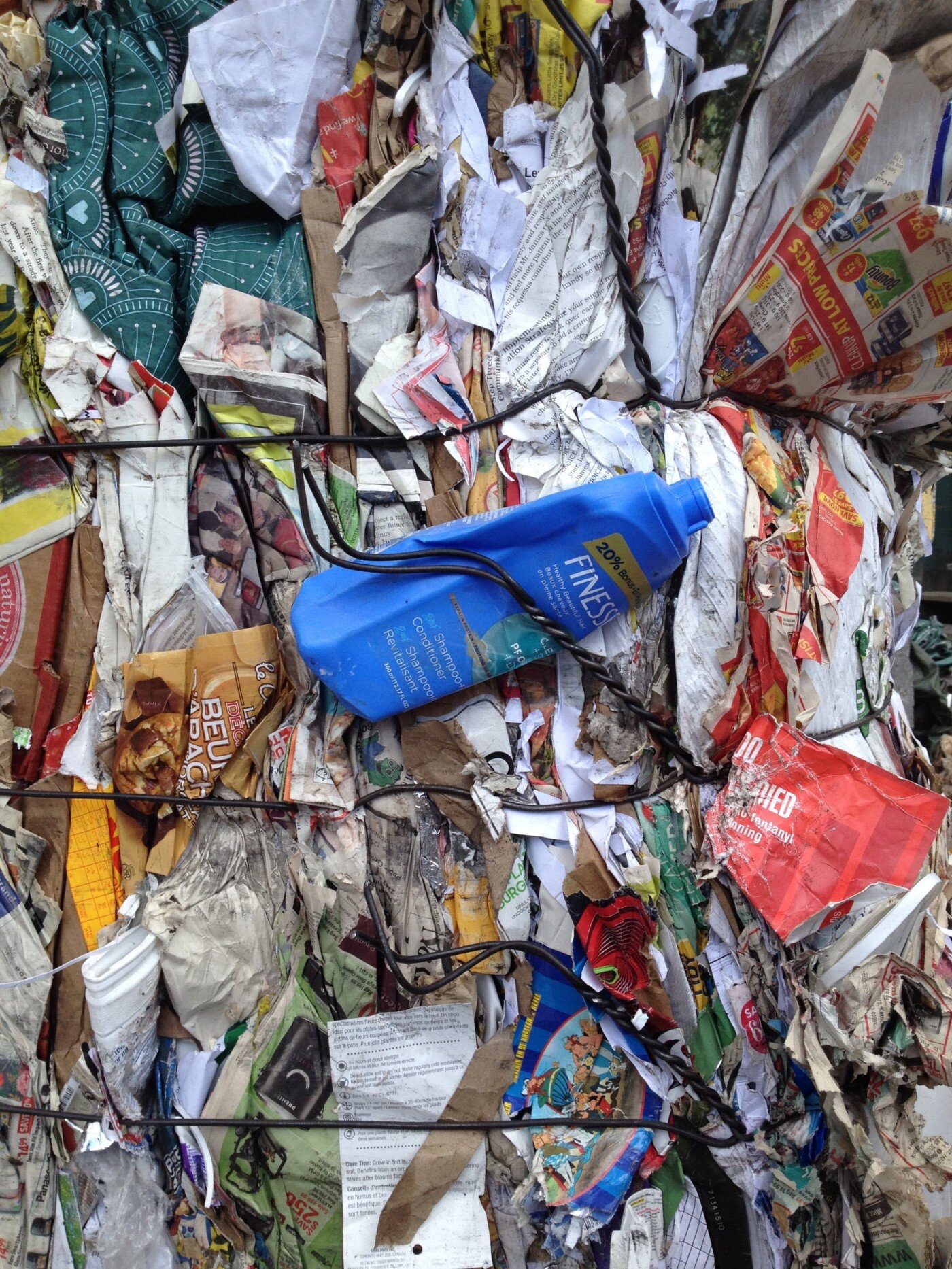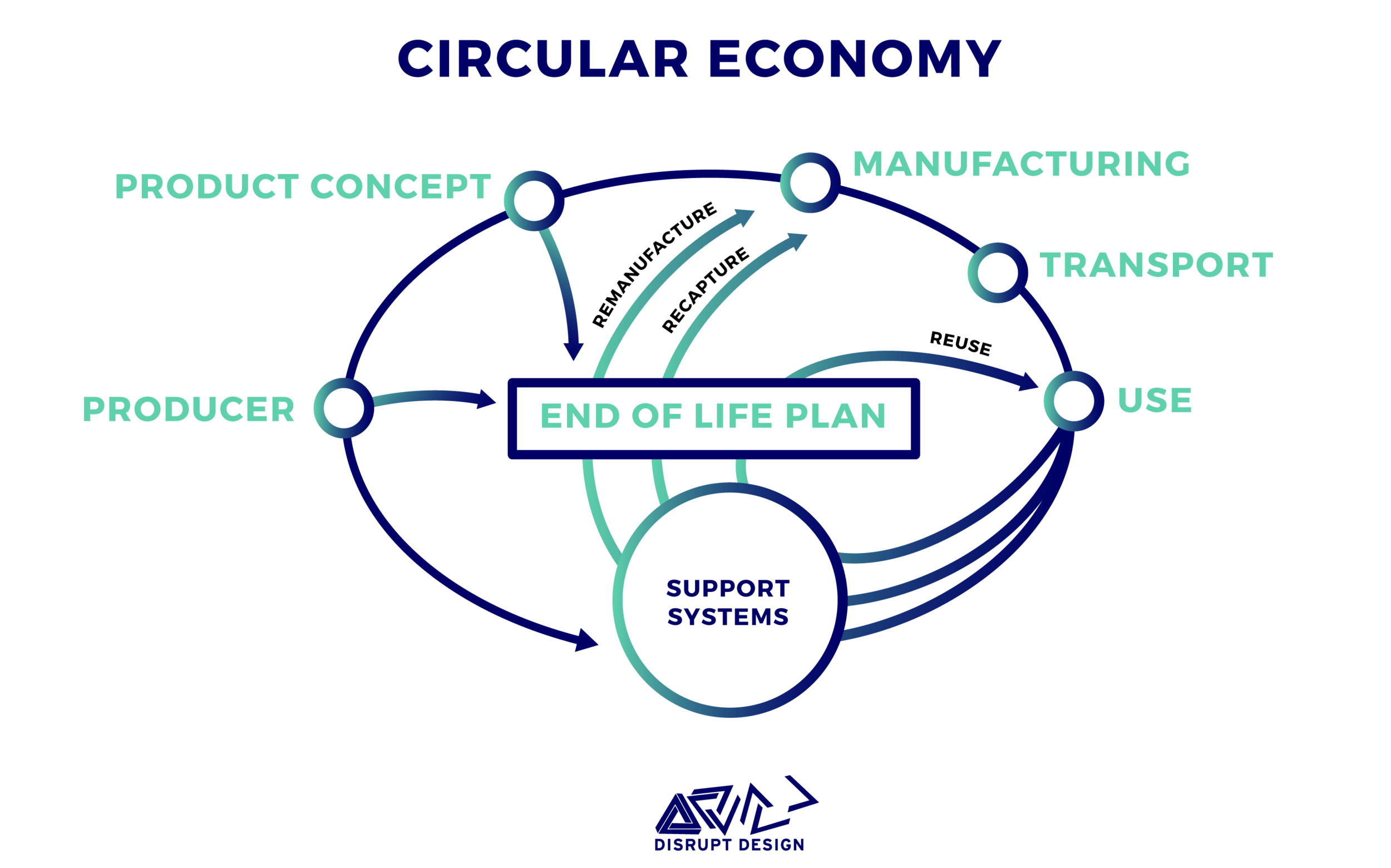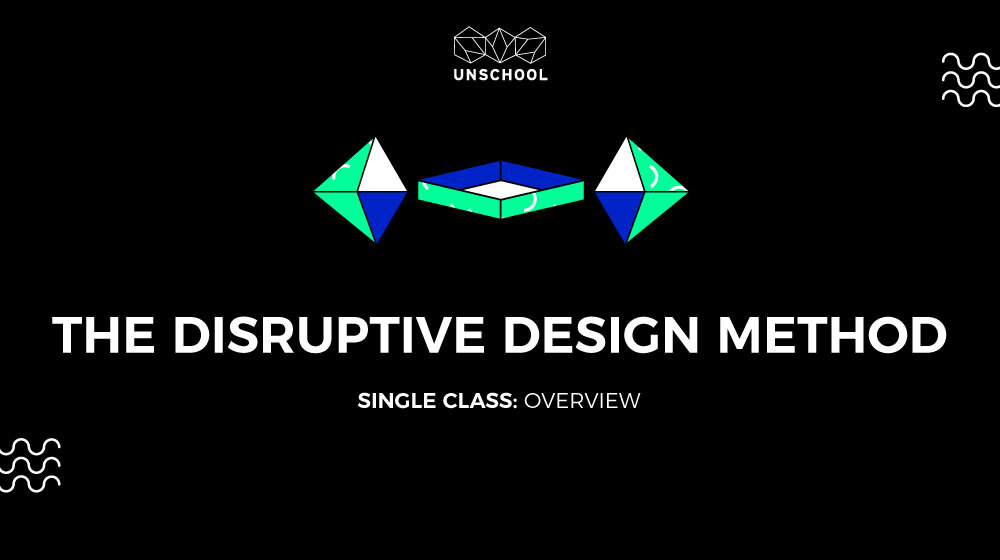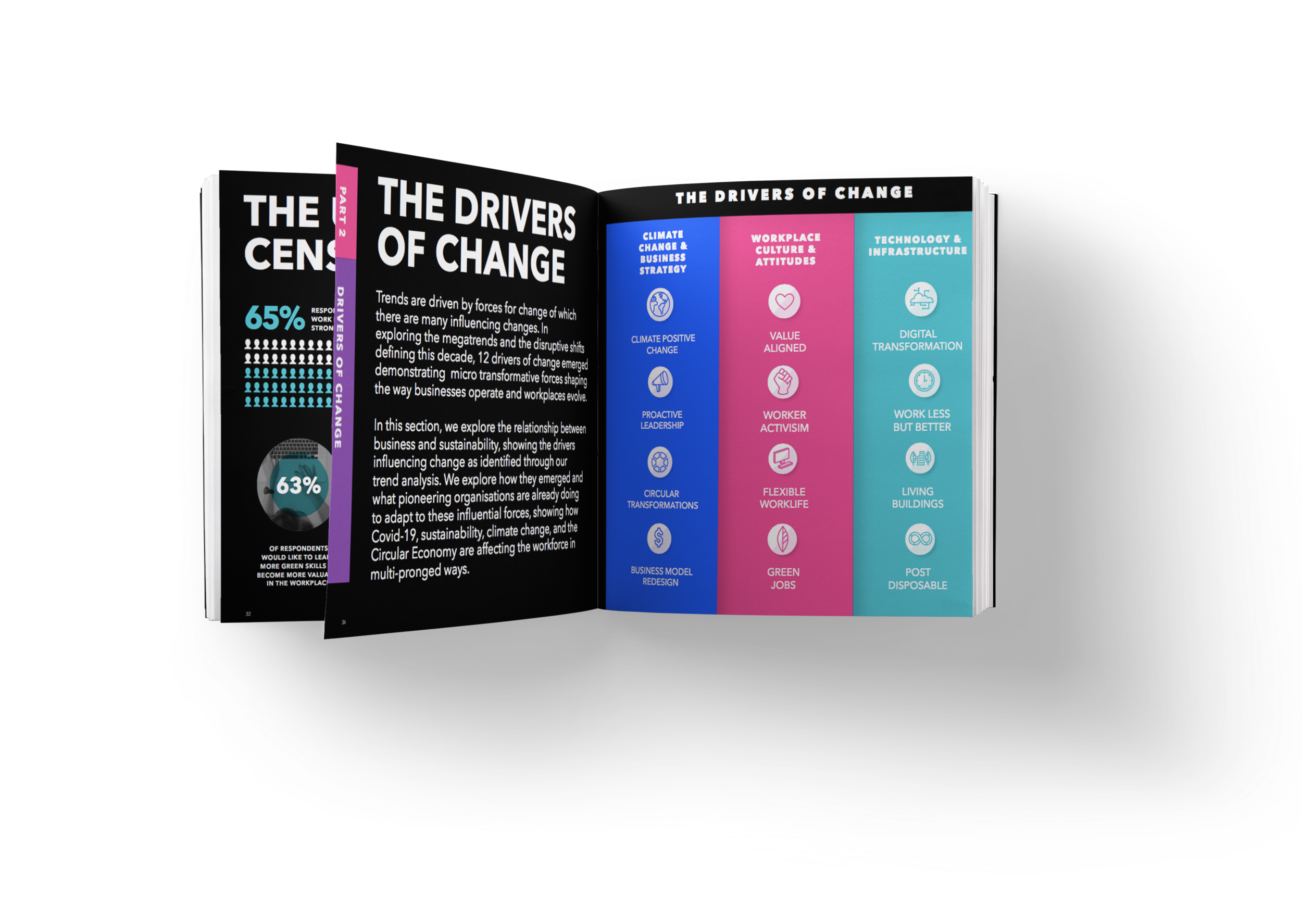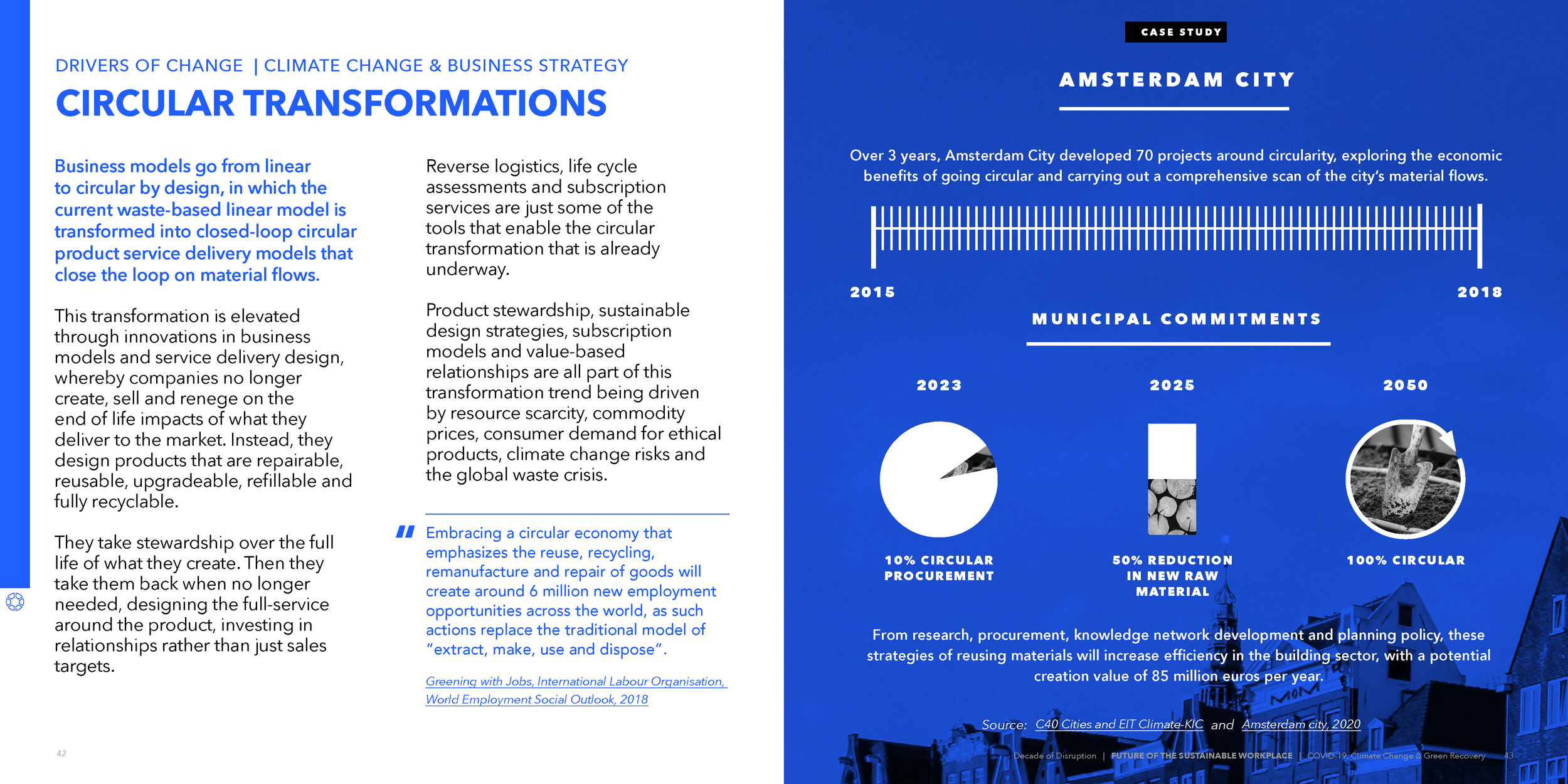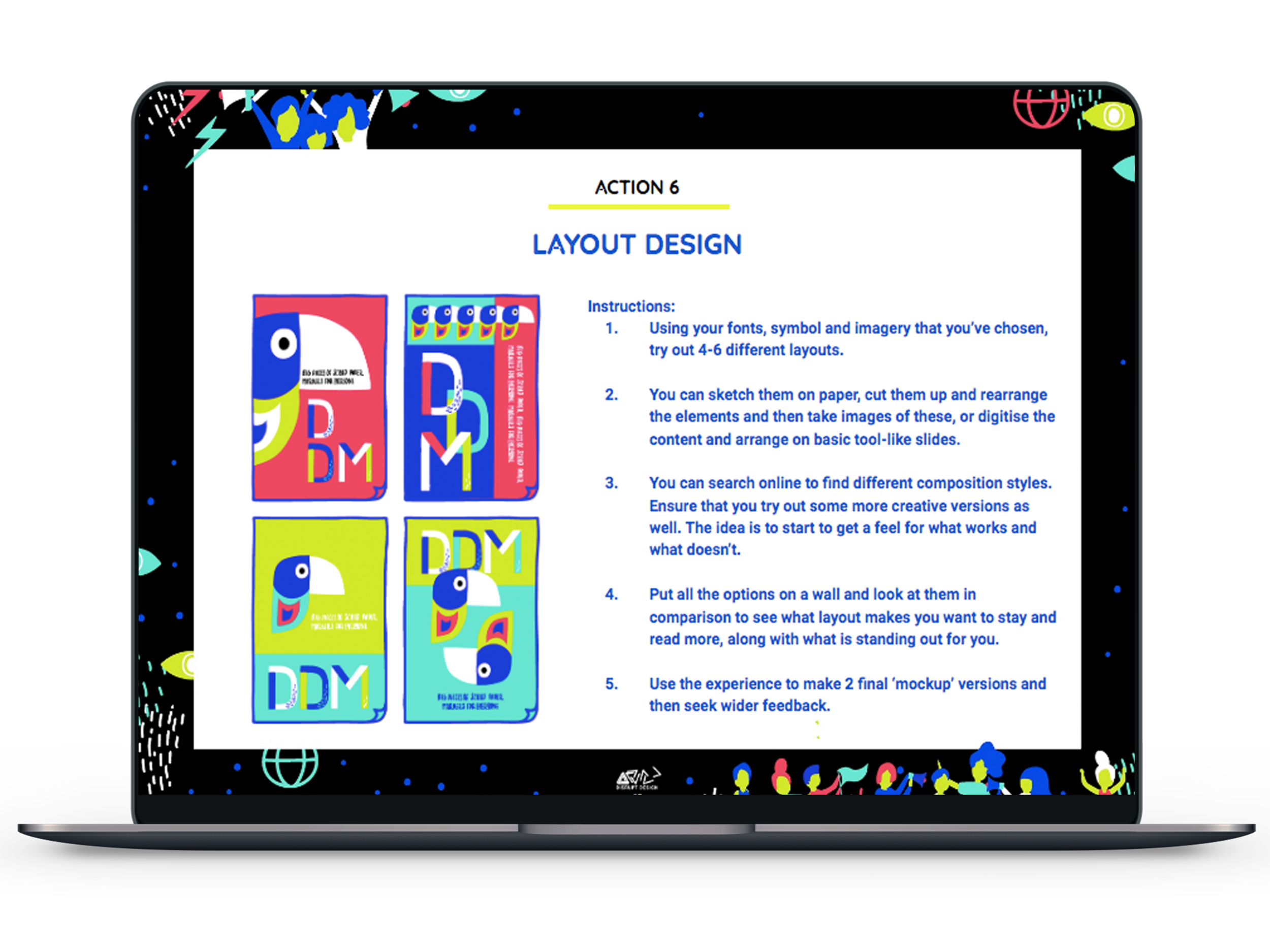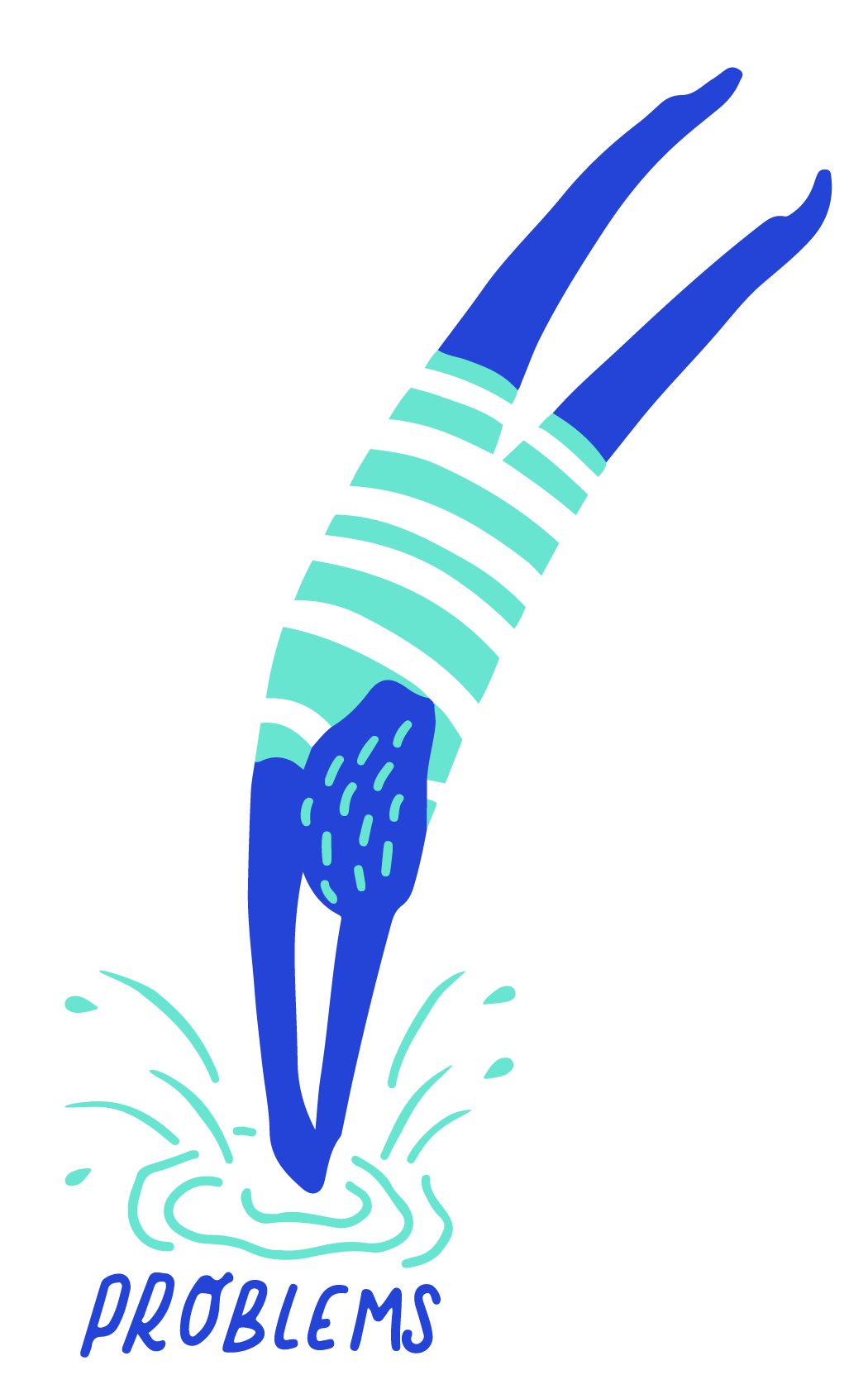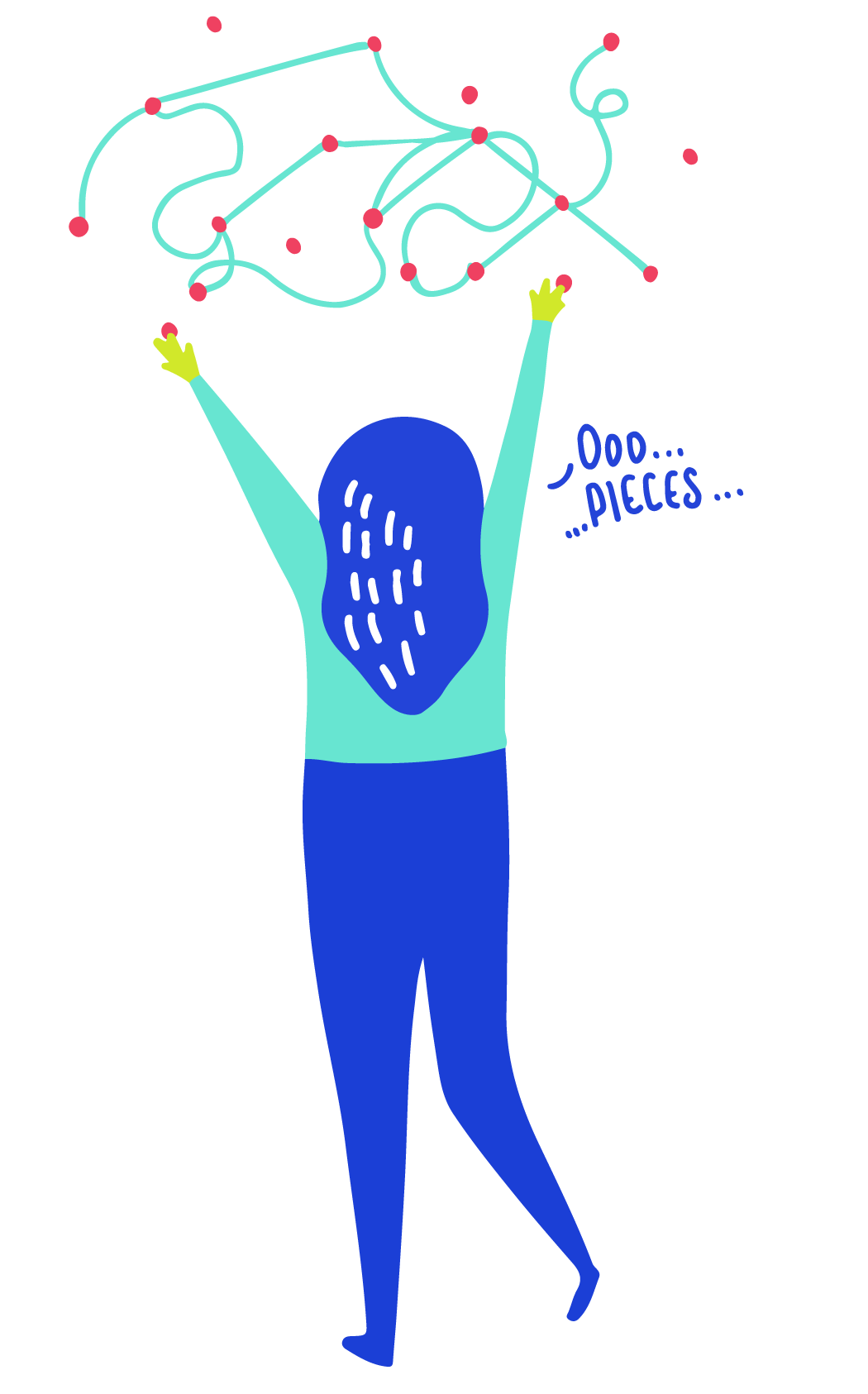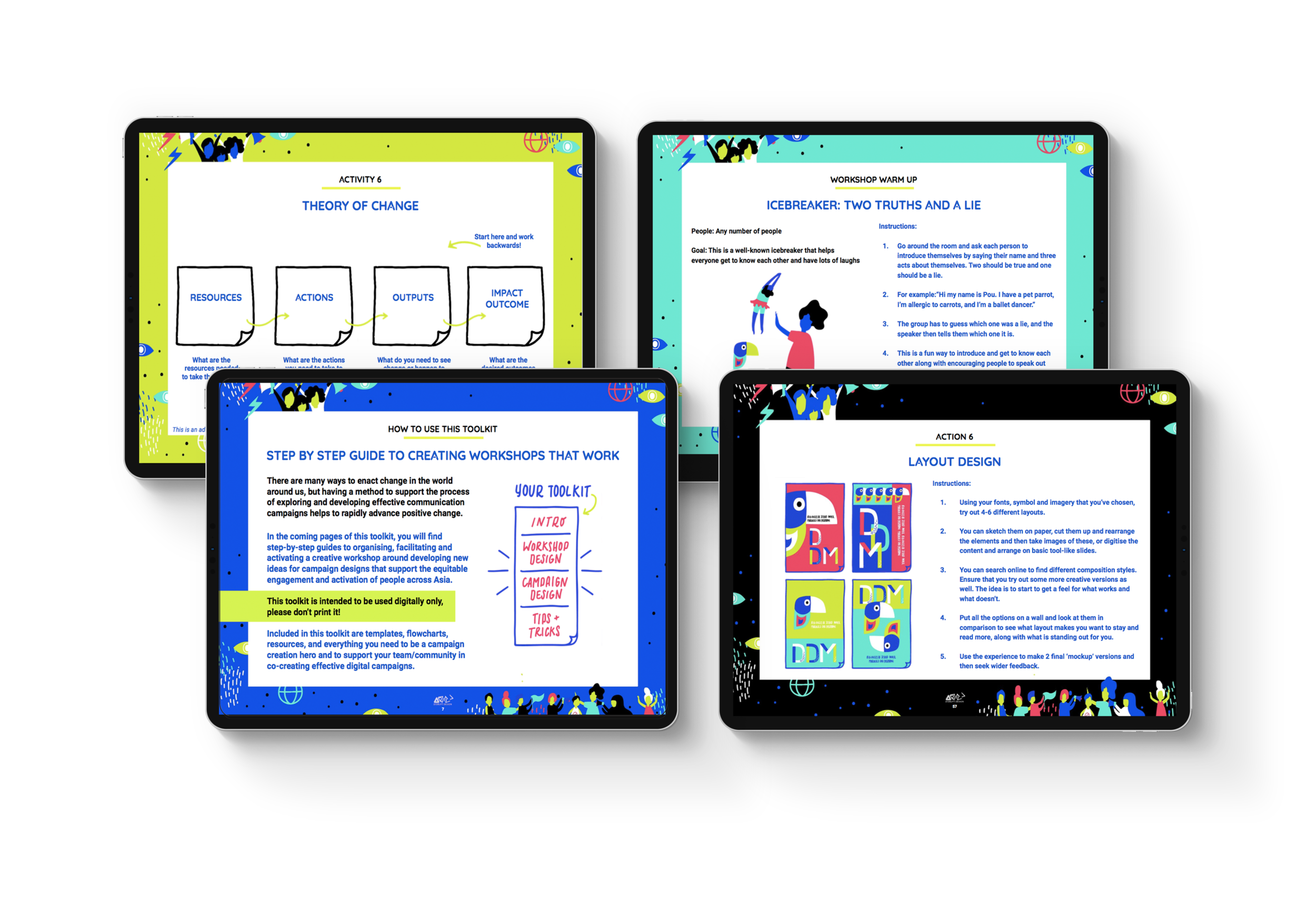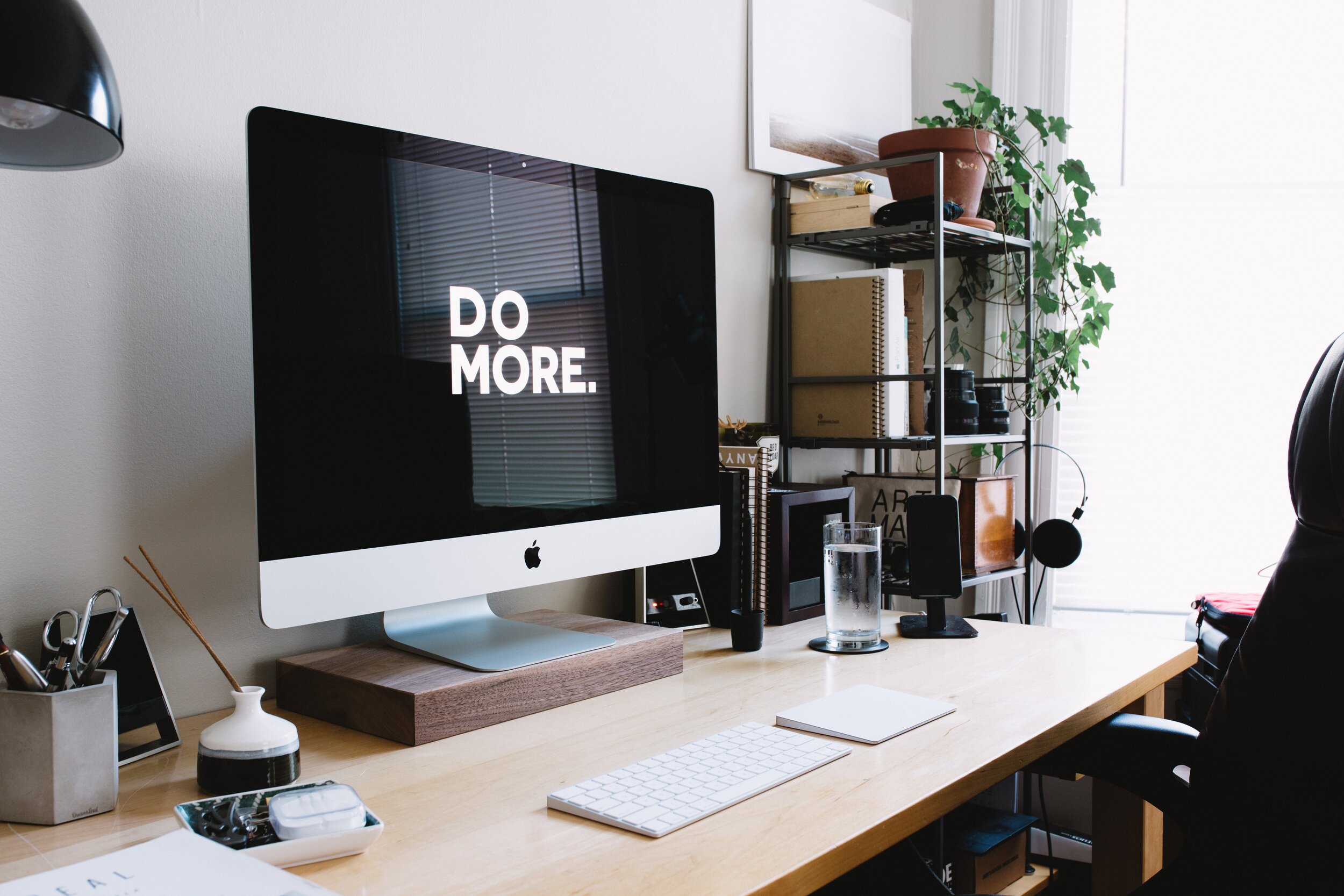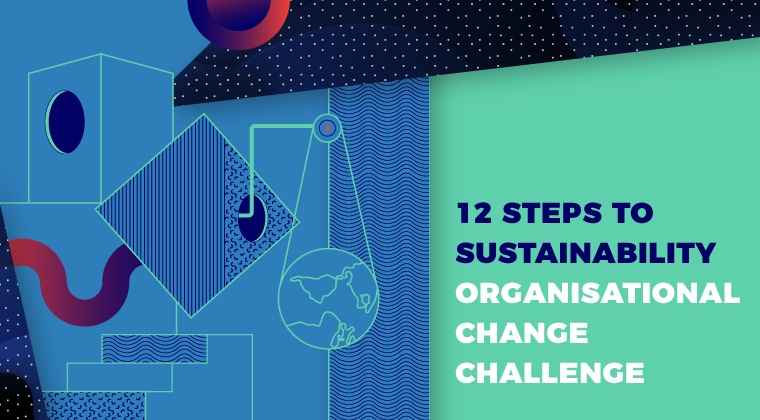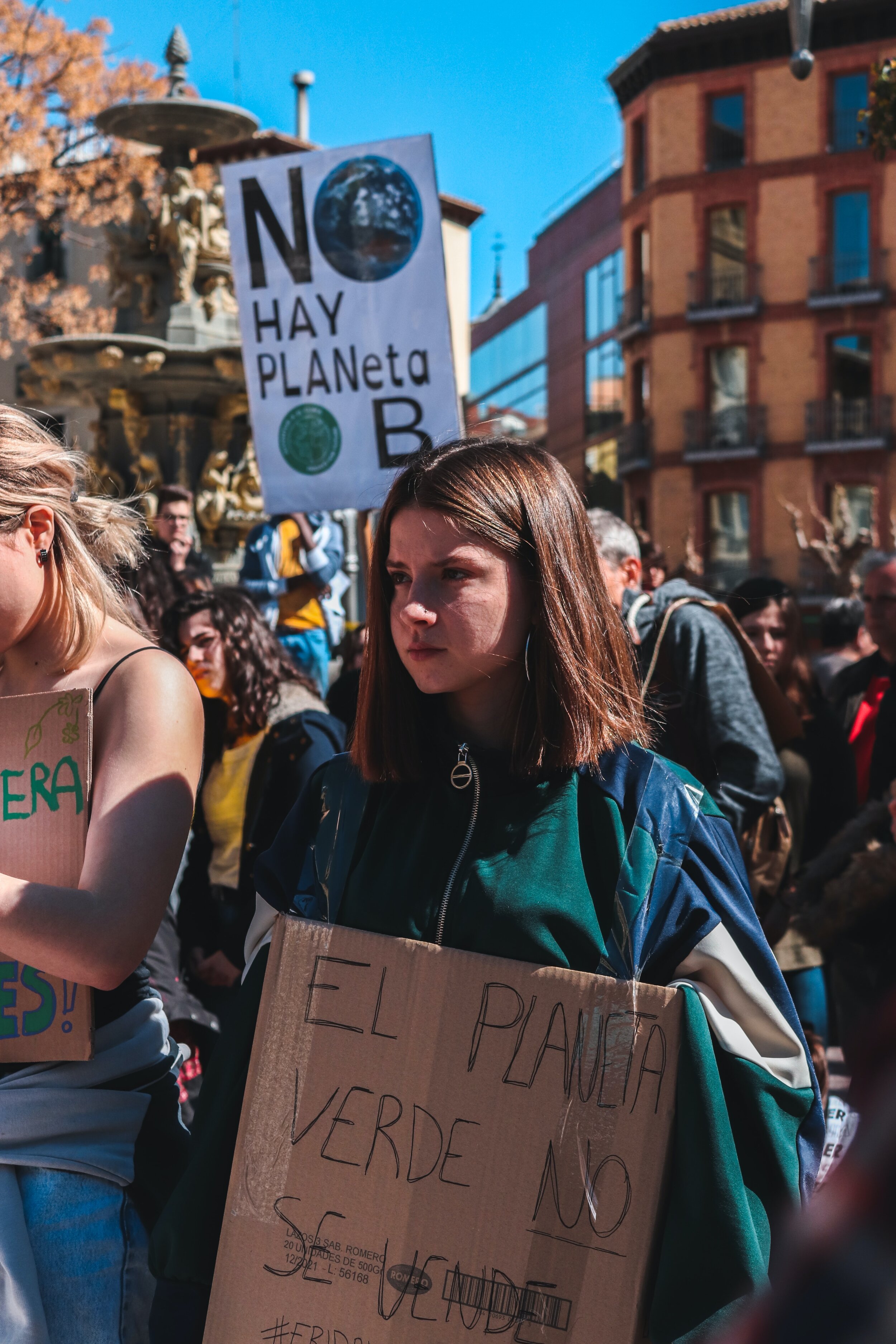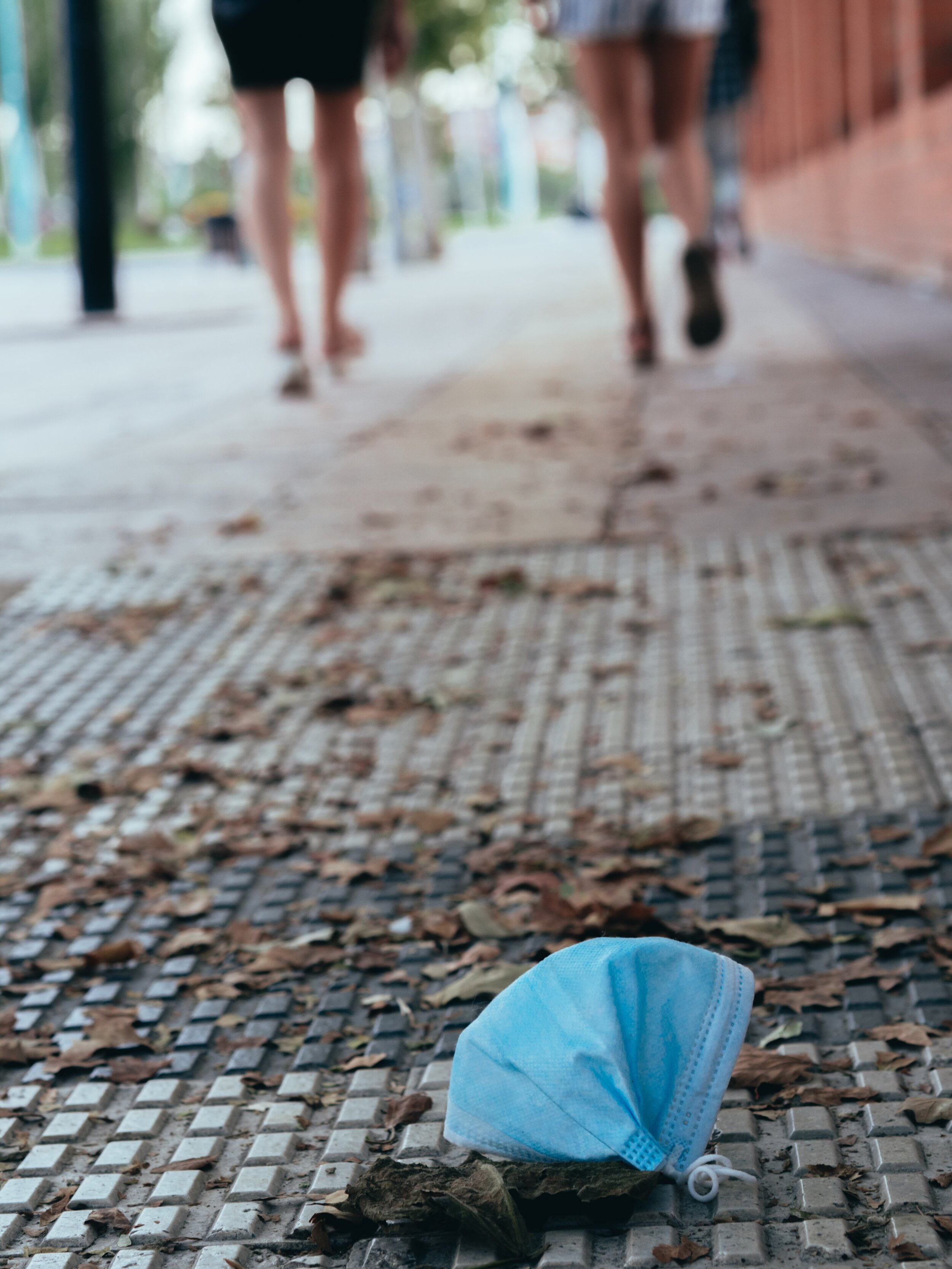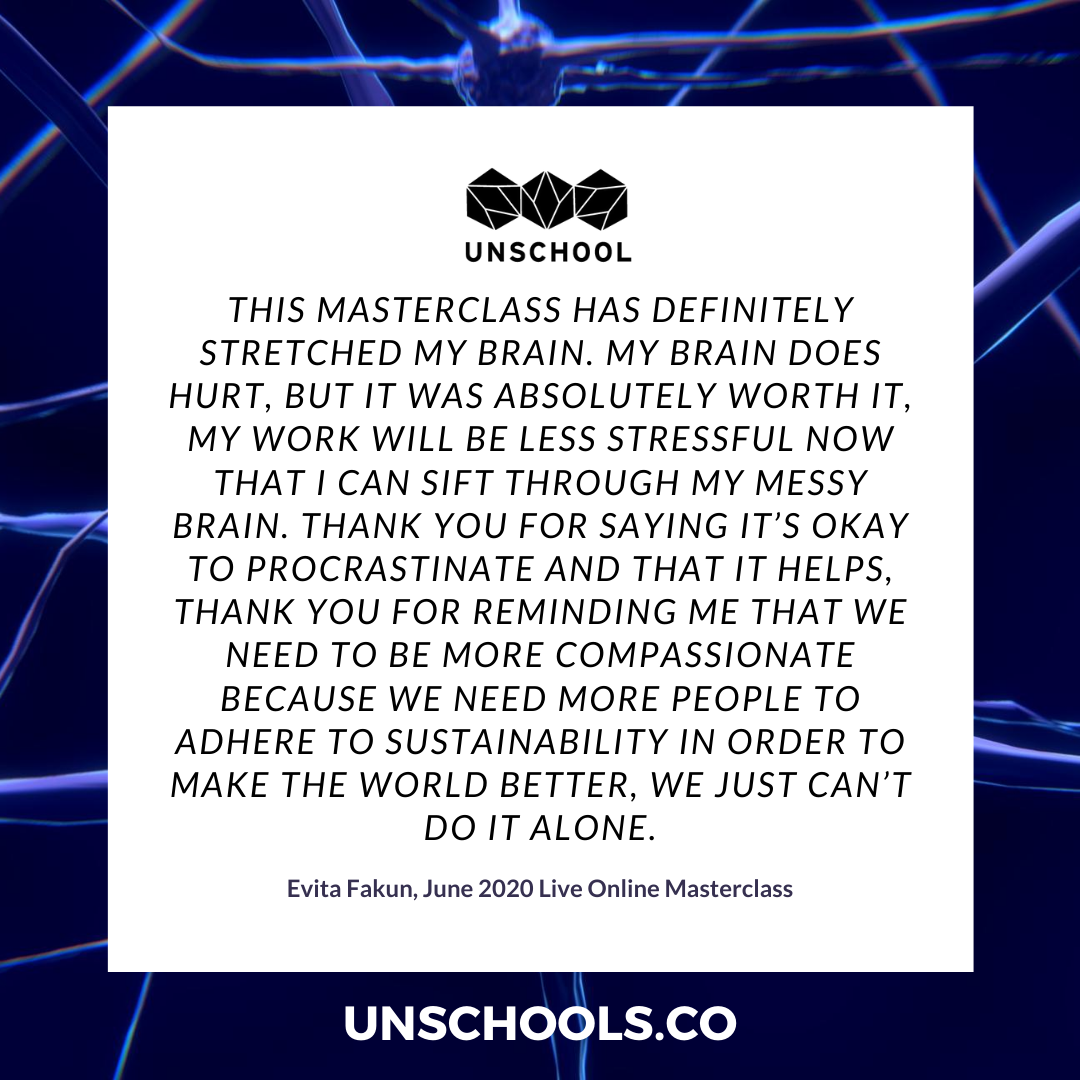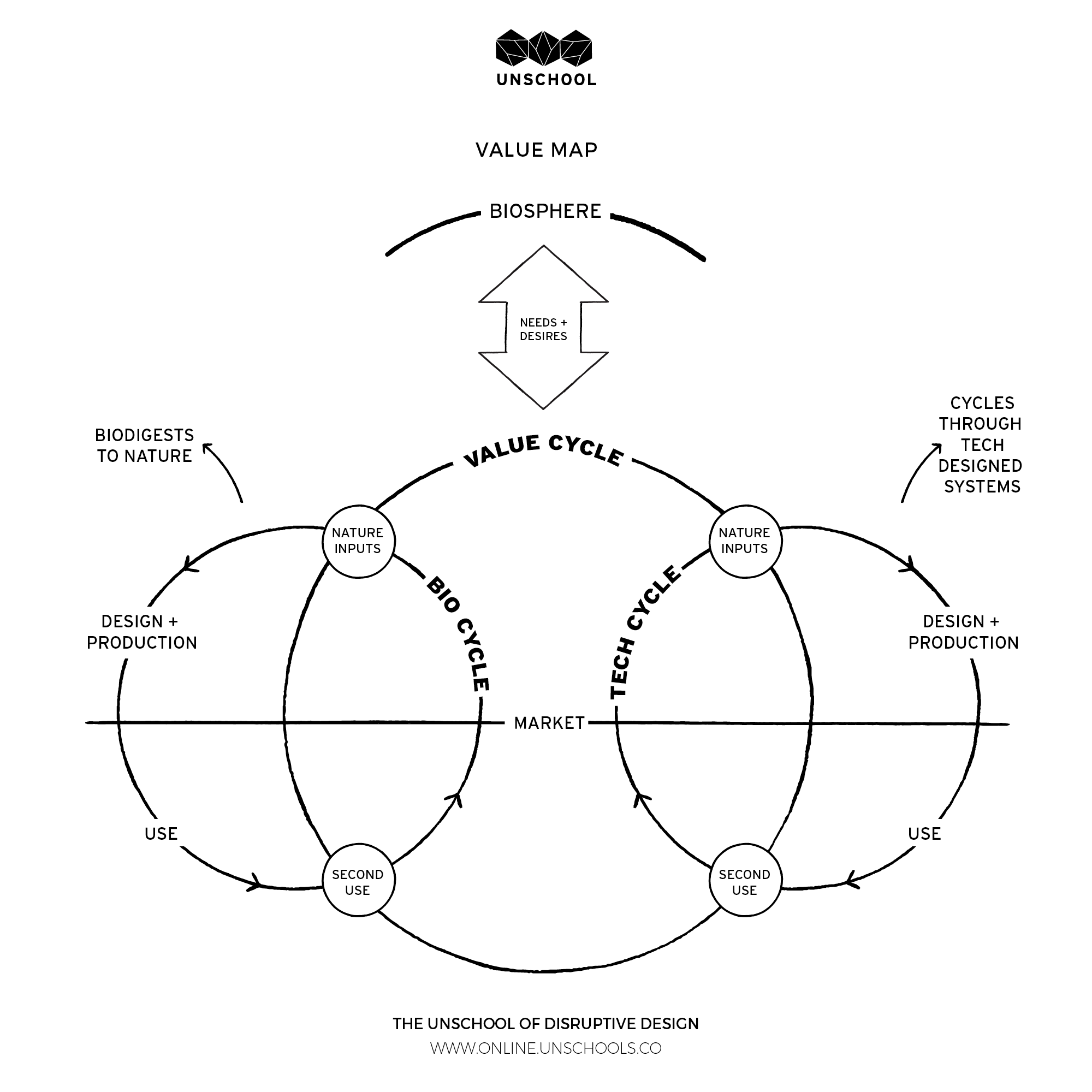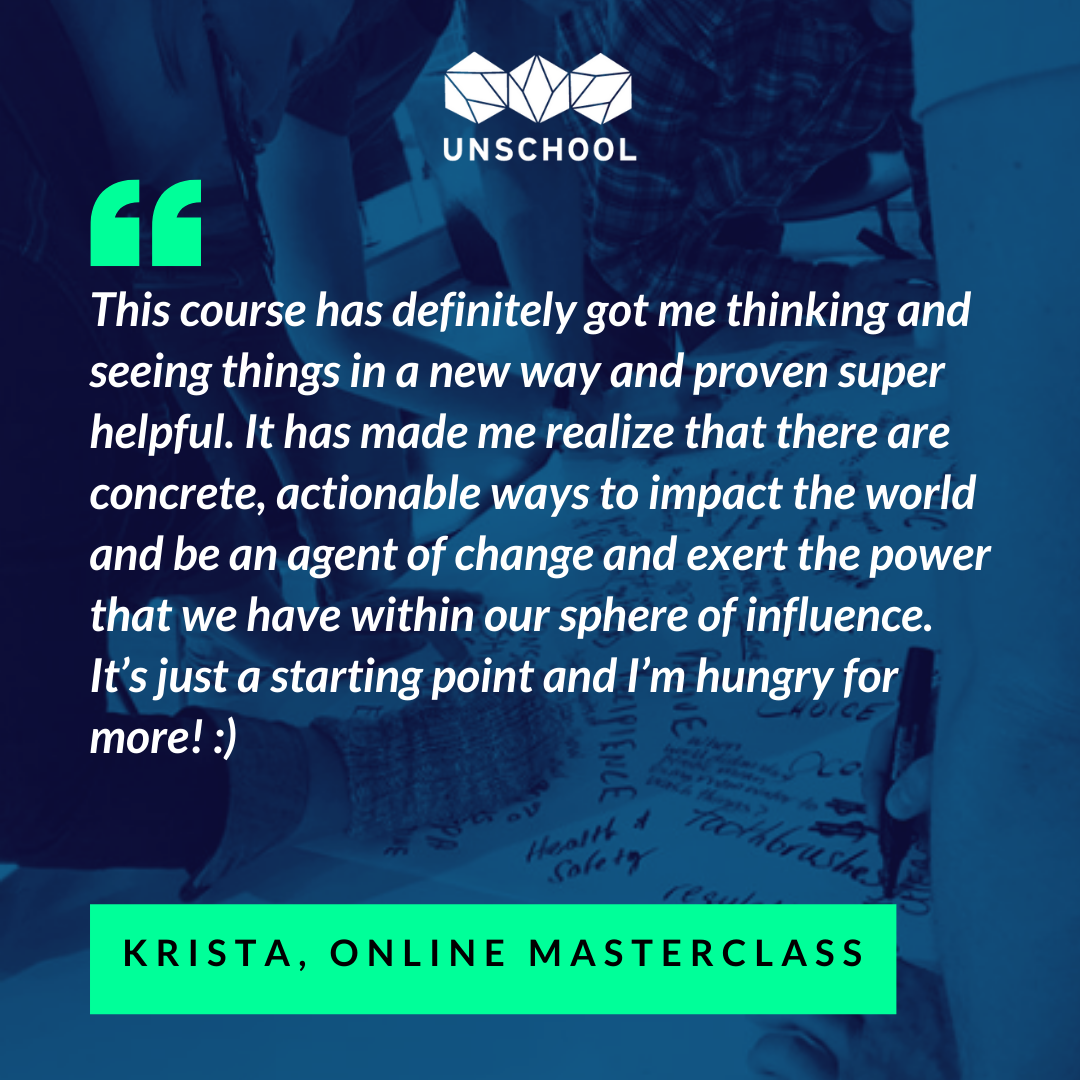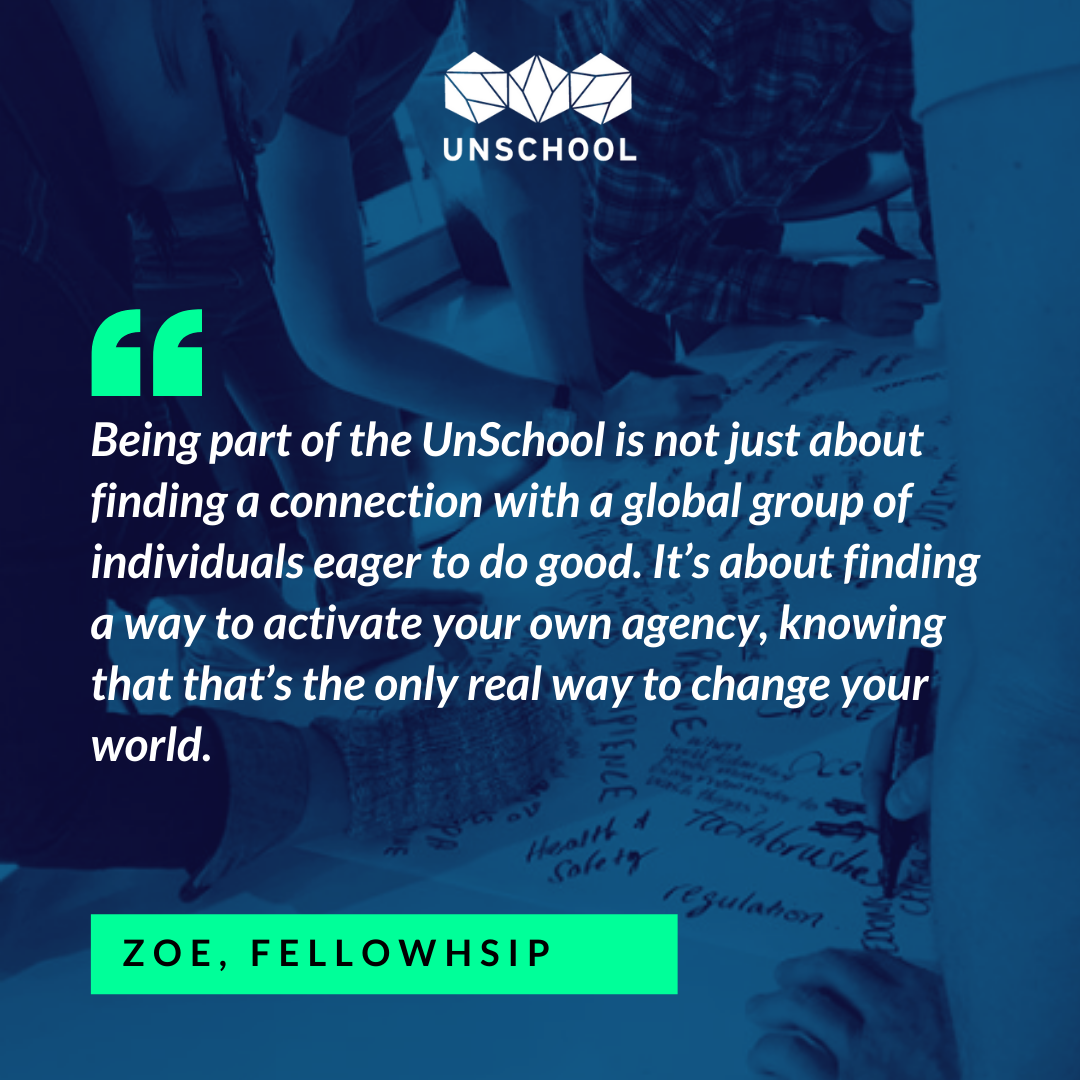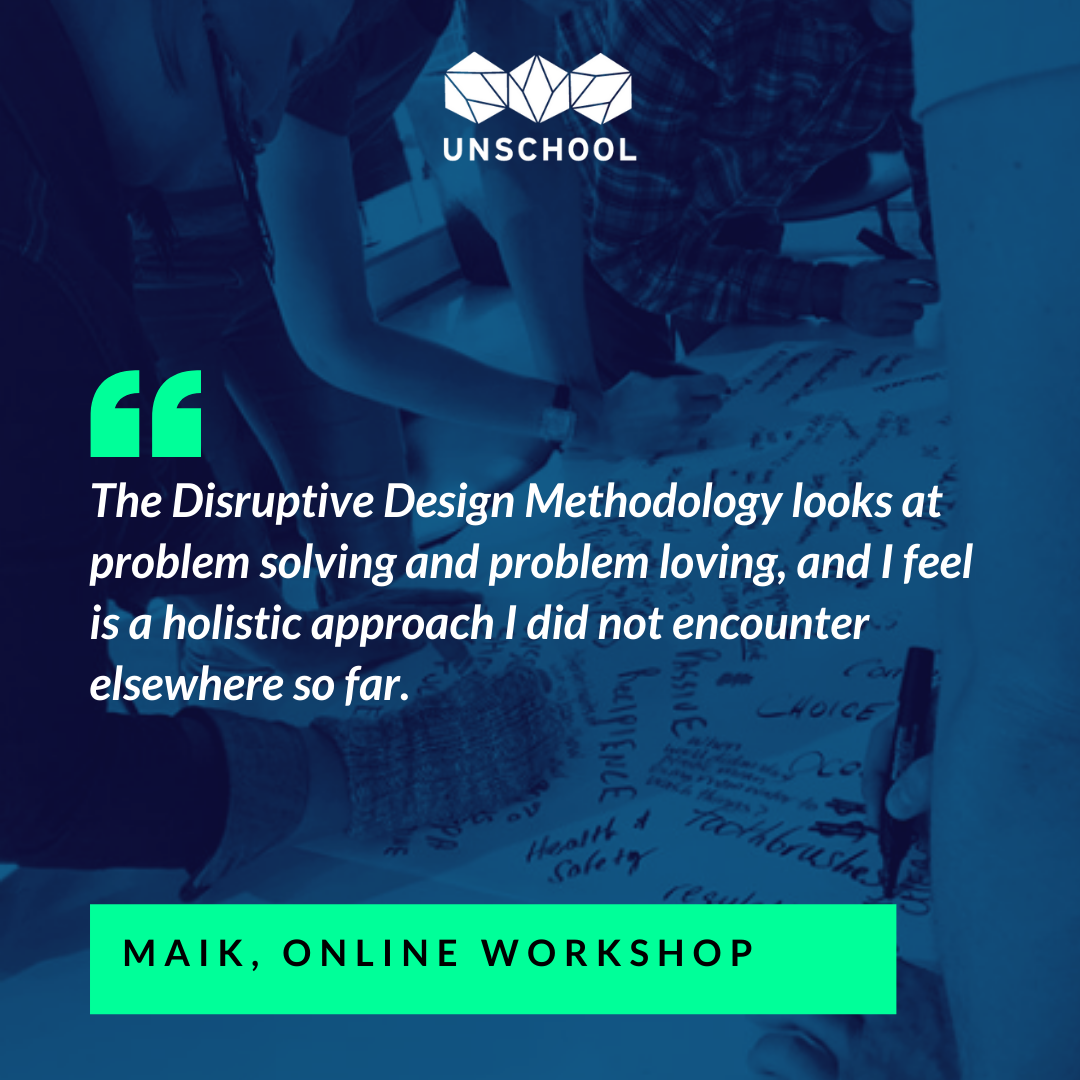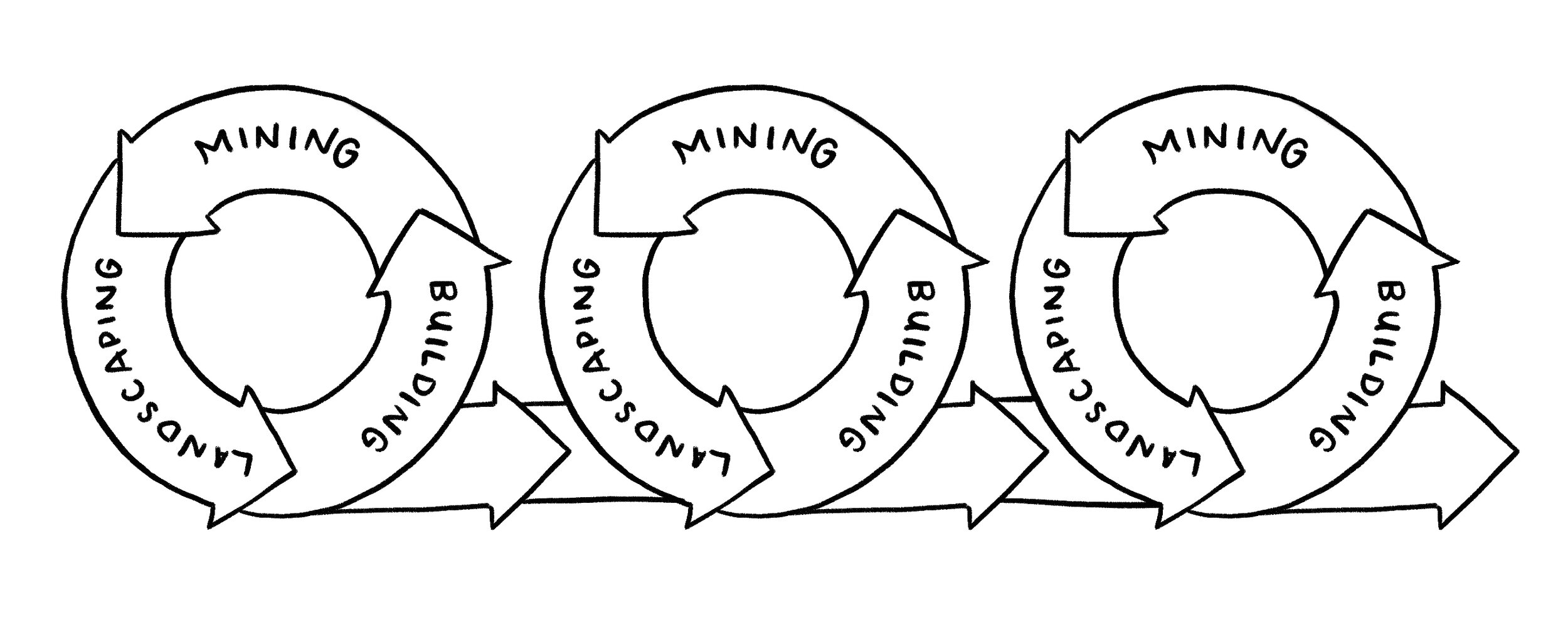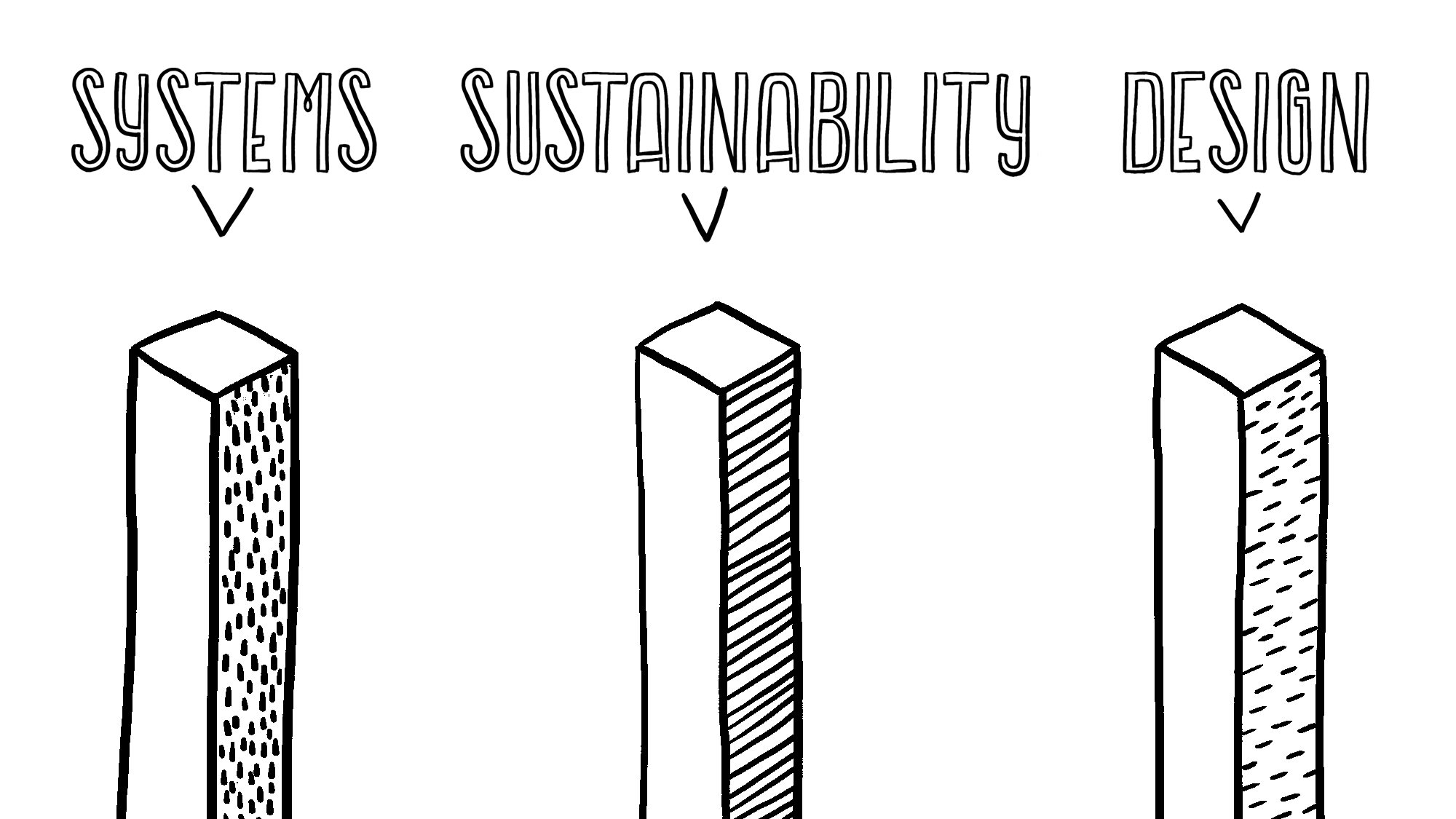By Leyla Acaroglu, originally published on Medium
Image by Volodymyr Hryshchenko on UnSplash
Wishcycling is when people place non-recyclable items in the recycling and hope those items will end up being recycled. The unfortunate reality, though, is that these actions contaminate the recycling stream and reinforce the very problem of waste.
Wishcycling comes from a place of good intentions, but as we all know, good intentions do not always lead to good outcomes.
I think it’s safe to say everyone has done this at some stage.
We’ve popped the coffee cup into the recycling bin with some coffee still in it and the lid on, or that thin plastic wrapper, a pizza box, lightbulb, broken drinking glass, batteries, chopsticks, maybe even an extension cord (I’ve seen it happen), and hoped that it would go off and be magically made into some new thing.
Yet the truth is, we don’t have a magical recycling system where everything can be easily transformed into something new. In fact, most things you think are recyclable, are probably not. Recycling has not been able to keep up with the rapid changes to our hyper-disposable and complex material world. Yes, your uncoated paper, tin and aluminum cans, PET bottles, and a few other ridged plastic products can technically be recycled, but the vast majority of the packaging and products that end up in your home, can’t or won’t get a second life.
Waste collection systems all over the world are struggling with the diversity of material combinations of products and packaging. Coupled with the recent changes to the global recycling supply chain, we have an exponential waste crisis unfolding. The list of what not to include in your recycling (because it will end often up contaminating the entire load of recyclables and be destined for landfill or incineration, all at a cost to the recycling company) is long. It’s actually surprising just how many not-to-include items are on the list in some places. That’s because recycling is different everywhere, and because we have created a material world so complex, it’s hard for the waste processors to keep up with the diversity of ever-changing waste streams.
When modern recycling first became a regular curbside thing in the 70’s (in part to reduce the amount of waste filling up city landfills), the material world was very different. Originally it was just glass, metal and paper that were separated and collected. These had clear markets they could be sold back into, and so the economics of recycling was feasible. Then came combination products like tetra packs and chip packets (plastic and aluminum together), and a vast number of plastics. The diversity of new packages and household products started to really muddy the waters for the recyclers, and over time, most recycling moved to a single market — China.
Now we live in a material age where there are tens of thousands of different material and product combinations that enter homes the world over, and after a few decades of being told that recycling is great, we wishfully place many of them in the recycle bin, feeling good and hoping for the best.
Take, for example, the samples of packaging that I collected from different retailers in the UK. I found instructions, in small print on the back, mainly telling me that the products needed to be returned to the supermarket or were not recyclable at all. I was alarmed by how many packages (organic food products I might add) explicitly stated: “Do not recycle.” Nearly all of them were non-recyclable in my household collection system, yet a quick look in the shared recycling bin in my apartment block and it was overflowing with these very same un-recyclable materials.
The issue of greenwashing — misleading consumers into thinking something is green, or in this case recyclable, when it’s not — is a topic I have talked about in the past, and this certainly plays into the wishcycling issue. But it’s not as simple as all of us being manipulated or duped into thinking that everything with a recycling symbol is recyclable.
Many of us really do wish that things we buy can be recycled because it validates us buying them to begin with.
The people producing these types of packaging and products are very rarely thinking about the end-of-life issues that their material combination choices will have on a waste stream. They deflect responsibility onto us, the customers, and onto the city that will have to manage the plethora of produced waste from their poor designs. I also think it’s unfair that there is an expectation that the customer will be able to decipher the many different options for end-of-life management, for what appears to be the same types of materials, when they are not, as there are hundreds of different types of polymer combinations.
Equally, retailers don’t set adequate guidelines on what types of packaging they will accept in their products, so it becomes a free-for-all. Without shaming the specific brands or supermarkets, I can say that a quick walk up and down the isles of several UK supermarkets showed me that most of the packaging was un-recyclable. I’m going to guess this is the same in Australia, North American, China and most other major economies.
How can we, the customers, be responsible for not recycling when so much of what our food and hygiene products are designed into, is packaging that is not even collected in most cities? Here is a selection of packaging from fruit and nut packaging from major UK supermarkets, all non-recyclable. I wasn’t just cherry-picking these ether! Go look in your cupboards and see what is actually recyclable, and what is most likely not.
Plastics are particularly problematic as they are not easily recycled. Whilst the industry invested 50 million dollars a year to convince us that a number inside a triangle stamped on the base of a piece of plastic will mean that the product will be recycled, the likelihood of it being turned into something new will depend on many different factors, such as: if it’s even technically possible to recycle it (often not); how contaminated with food or product it is; if the local council will collect it; if the local municipal waste processing facility will take it; and if there is a market for that type of plastic to be sold into. Oh, and if there is a market for that plastic to be made into new plastic products. The oil and plastics industry has long known that it’s cheaper and easier to just turn virgin oil into new plastic than it is to collect, clean and resell it. They have profited off us believing that recycling is the solution when they have long known it is not.
This all leads to much confusion about what can and can’t be recycled, which unfortunately leads to people’s wishcycling, which then goes on to contaminate recycling streams all over the world, and then we get blamed for it! Education alone will not fix an inherently broken system.
Mainstream curbside recycling has been around for just over thirty years, and it’s in the last fifteen years that half of all the plastic that has ever been produced has been made and sold. To add to this, more than 90% of plastic ever produced hasn’t been recycled. Not because we consumers do the wrong thing, but because most of it is not easily recyclable!
The Recycling Industry
The margins on recycling are already very thin, with the collections and sorting often being more expensive than the value of the products being recycled. Some recycling processors still use human line sorters, and others are entirely mechanical. The machines that sort waste are often engineered for the main types of recyclables, such as glass, metal and hard plastics, not the plethora of other stuff that ends up in the sorting lines.
Then, even after the products are all sorted out and bailed up, the waste processing company has to find a buyer for that specific waste stream. Metals usually have a healthy demand, and thanks to the rise in online shopping, the paper board industry is doing ok. But plastics have always struggled to find a place to go (all the more reason to focus on post disposable design).
We wishcycle in part because we have been told that recycling is great and it will solve the issue of waste (this the plastics industry did a great job of convincing us of in the 90s, by creating the numbers up to 7 inside triangles that get stuck on certain types of hard plastics to supposedly help everyone identify and recycle them — side note, the history of the design of the original recycling symbol, the triangle made out of arrows, the Mobius Symbol, is fascinating and well worth the read here in this article.).
I have explained in the past that the global recycling system is broken, and that recycling is part of driving the generation of waste. It legitimizes the production of waste and creates a false solution to a manufactured problem. But here in this article, I want to explore the phenomenon that results from confused, good-intentioned, or perhaps lazy people that don’t know what to do with certain types of waste.
I will be the first to admit that even I am one of them at times. Intrigued by how others experienced this, I asked the UnSchool team to do a quick snapshot assessment of food items in their houses. As can be seen from the image below, it’s all very confusing about what the symbols mean. The cross through the recycling symbol means it can’t be recycled, but should we be happy that these ones even have any instructions at all? Because many of the other items they found had no information stating whether it was or wasn’t recyclable. This begs the question, whose responsibility is this? Ours, the supermarkets’, the local council, the recycling companies’, the packaging designers’, the product owners’? The federal government’s?
With such a confusing mess, it’s no wonder people wishcycle!
As I explored these issues, I come to feel very sorry for the recycling sector; they are beholden to the decisions made by the producers of products and packaging, and to the lack of regulation or guidance from the government. Then they’re burdened with the responsibility of finding new homes for an ever-growing stream of disposable stuff made with little care for what its end-of-life destination or impact will be.
How big is the wishcycling issue?
The less sexy name for the issue of wishcycling is recycling contamination, and in wealthy countries like the UK, Australia and the US, it’s a massive issue.
According to the UK Department for the Environment Food and Rural Affairs (DEFRA), in 2018, contamination meant councils in the UK sent 500,000 tonnes of recycling to landfill. Research conducted by WRAP revealed that 82% of households in the UK add at least one item to their recycling that is not accepted. The amount of plastic packaging used in supermarkets in the UK is staggering. In 2017, the 10 biggest UK retailers produced 900,000 tonnes of packaging and 2bn plastic bags.
“More than two-thirds of consumers (69%) believe supermarkets and retailers are responsible for reducing the amount of plastic used, and many want to see more progress.” — Packaging News, 2021
In the US, the recycling system is increasingly under pressure. The EPA explains the conundrum of recycling: “Most Americans want to recycle, as they believe recycling provides an opportunity for them to be responsible caretakers of the Earth. However, it can be difficult for consumers to understand what materials can be recycled, how materials can be recycled, and where to recycle different materials. This confusion often leads to placing recyclables in the trash or throwing trash in the recycling bin.”
All over the US, recycling with no market to sell to, or place to store it is being burnt or sent to landfill. Increasing costs of processing have meant that some councils have just stopped collecting recycling altogether. This analysis shows how different states are working to address the issues with recycling in the US.
“Since 1960 the amount of municipal waste being collected in America has nearly tripled, reaching 245m tonnes in 2005. According to European Union statistics, the amount of municipal waste produced in western Europe increased by 23% between 1995 and 2003, to reach 577kg per person.” — The Economist
In Australia, a country where over 60% of people recycle, it was reported recently that 58% of plastic and 23% of glass packaging were put in the wrong bin. This is contributing to ongoing issues with contaminated exports to neighboring countries, where over 50% of recycling is sent to be processed.
To add insult to injury, Reuters reported last year that the oil industry plans on investing 400 billion dollars on plants to make new plastics and just 2 billion on reducing plastic waste. Wishcycling is only going to get worse.
Addicted to Disposability
The issues of wishcycling go deeper than just misunderstanding what is and isn’t actually recyclable. It speaks to a wider issue of waste and our relationship to it — specifically, how planned obsolescence and enforced disposability feed our addiction. To justify consumption, we need to believe that there is a better destination for our waste than just landfills, incineration or escaping into nature. We want it to be ok to create it, and as our material lives have become more disposable, more complex, there is a higher desire for the idea of recycling to work.
All over the world, the amount of municipal solid waste being generating is growing at unprecedented rates. In India, in 2001 it was 36.5 million metric tonnes, twenty years later in 2021, it’s now 110 million metric tons. This is estimated to grow to 200 million metric tons by 2041 (source, statistia).
“China is responsible for the largest share of global municipal solid waste — at more than 15 percent. However, in terms of population the United States is the biggest producer of waste. The U.S. accounts for less than five percent of the global population, but produces roughly 12 percent of global MSW and is the biggest generator of MSW per capita.” — Global waste generation — statistics & facts, Statista, 2021
Recycling is not the solution to waste. The global increases in solid waste generation are happening at rates far, far greater than any recycling system can manage (except maybe Germany, which has policies that shift responsibility back onto the producer and Wales, which is the world's third-best recycler!).
Recycling doesn’t work because its existence incentivizes and legitimizes the creation of waste. Thus, as a solution to the global waste crisis, it does no more than temporarily mask the issue at hand. We live in a linear economy, a system that requires the production of waste for it to function. We designed an incentive system of growth that relies on continual consumption, which means we must make waste to perpetuate it. To solve the waste crisis, we need to redesign the entire system of materials and how they flow throughout the economy. And certainly, companies need to be held accountable for the things that they create and pump out into the world.
This is the biggest design challenge of our time. How do we redesign everything so it works better for all of us? How do we meet human needs without destroying the systems that sustain us? This is the topic of a book I’ve been working on for some time and the more I reflect on the changes that need to occur, the more I see that many of the solutions put in place (such as recycling) are actually reinforcing the problems and preventing us from reimagining the systems that created this issues to start with!
I find this a hard realization to voice, but under the current system, recycling is a key part of legitimizing the disposable economy we live in and thus we need to stop relying on recycling and demand a full redesign.
Recycling contamination. Photo by Vivianne Lemay on Unsplash.
Aspirational Recycling
Recently there were reports of UK recycling being dumped in Turkey after the recycling market took a huge hit from the China waste ban that started in 2018 (the rise in waste trafficking is a rabbit hole I will explore in another article).
This is where the wishcycling situation plays into a psychological bias we are all part of. It’s also called aspirational recycling, which feeds into the desires that people have to “do the right thing.” Here, we all want recycling to be the solution to our growing global waste crisis, so much so, that people are likely to recycle items that connect to their self-identity, such as the coffee cups or the take-out food containers, even if they have a suspicion that they are not recyclable (which cups are not, nor are black plastic take out containers). A Harvard Business Review article claims there is a bias whereby waste production is increased through the pre-knowledge that an item could be recycled, which leads to an increased use of disposable items. So we trick ourselves into using things that are non-recyclable by wishing that they were. This is the root cause of wishcycling.
We collectively rely on recycling as a crutch, allowing the potential of materials being reused to justify our continued consumption and use of disposable items.
Industry relies on this collective bias to continue to produce more and more non-recyclable stuff and feed into a collective misunderstanding of what is and isn’t recyclable. Confusion is a great tool for distraction. When known side effects (such as the millions of tons of plastics in the oceans) come to light — and even though there is a nonexistent recycling system for the billions of tons produced each year— they go back and blame it on us for not recycling properly!
Is Recycling Worth It? By NPR
Then there’s the issues of different rules in different places, and the persistent claims from industries that things are recyclable (even if they are not), along with the misinformation that recycling is somehow the silver bullet solution to the world’s waste crisis — it’s no wonder we’re so misdirected. We wishcycle because we have been told that recycling is the solution and we all want to do the right thing.
Our desire for things to be “greener” often makes us do un-green things. This is not really our fault though; we’ve all fallen victim to decades of marketing spin from industries addicted to disposability, saturated with ads that tell us that littering is the issue and recycling is the solution. The false answer to a manufactured problem is to believe that a simple act of separating our waste into that which can be recycled and that which will end up in the ground or being burnt will fix the myriad of environmental and social equity issues that waste creates.
Recycling may have a place in a well-designed circular economy, but it will not solve the problem created by our addiction to easy, convenient, disposable stuff. The only way we can stop waste is by designing it out of the system to start with and this requires us to redesign everything, the materials used, the way we create products through to the entire economic system that they work within.
Wishcycling is part of a fairytale that has been told to us over and over again, it says recycling is a good solution to a massive problem. It feeds into our collective delusions that disposability can be remedied by the same system that benefits from waste. This all adds up to confused good-intentioned people who put their broken Christmas lights and soiled diapers in the recycling and hope for the best. And an industry that then blames the customer for not getting it right.
Where did the wishcycling concept come from?
The term “wishcycling” first appeared around 2015 when journalist Eric Roper wrote about the waste industry’s rising challenge of dealing with new types of materials and polymers that were making their way into the recycling bins of households.
In an article, Roper interviewed Bill Keegan, who was the President of a waste and recycling firm DEM-CON, where he mentioned the idea of people wishing things would be recycled. Inspired by the concept, Roper wrote a follow-on piece the following week about the concept of wishcycling where he detailed how plastic bags and bowling balls, food sachets, and loose bottle caps were all contributing to recycling contamination.
In the article, Roper explains, “A number of materials in particular frequently show up at local processing facilities, causing problems for the complex machines that make curbside single-sort recycling possible. They ultimately end up comprising the ‘residual’ waste that facilities cannot recycle.”
Wishcycling on the news (on Fox news!)
According to the industry magazine Recycling Today, “there are five common curbside recycling contamination themes: tanglers (hoses, cords, clothes), film plastic (plastic wrap or bags), bagged things (garbage or recycling), hazardous material (propane tanks, needles/sharps) and a category that can be summed up as ‘yuck’ things that downgrade other materials and clog the system (food, liquids, diapers, etc.).”
To help address this, on a practical level, online tools like this can help keen people figure out what can and can’t go in their recycling right now. But let’s be honest, the average person is more likely to make a quick judgment based on assumptions, leading to wishcycling. I know in my case, I feel guilty when I put things in the normal waste bin, so I want to avoid it and hope that the oat milk tetra pack is indeed going to be recycled!
Commonly wishcycled items:
Paper coffee cups: They are lined with plastic and have polystyrene lids so are not easily recycled. These have to go in the trash, so get a reusable cup for your daily caffeine fix!
Paper take-out containers: They are also often lined with plastic and if not then contaminated with the oils and residues of the food, the best you could hope for is the unlined ones going directly in your home compost or organic waste collection.
Broken glasses and ceramics: Recycling facilities are usually high-tech places that use lasers and magnets to separate out the recyclables. But often there are humans working a line, and broken glass can’t be picked out by the machines — humans with hands have to separate them out.
Pizza boxes: Any food-contaminated paper product is hard to recycle because the fibers absorb the grease and thus make the recycling process harder. So they have to go in the general waste or if you have organic waste collection/composting then it should go in there.
Flexible and soft plastics: These are basically ALL your food plastic packages that are soft and flexible, such as crisp and candy wrappers, rice bags, nuts and loose lettuce bags. Anything that is flexible is unlikely to be recyclable in most mainstream waste recollection services. Some stores offer a takeback program if you are diligent enough to separate, collect and take them back to your store.
Any electronic item: 100% of these have to go in a dedicated electronic waste recycling collection service. They are filled with complex and often toxic materials and can even explode, so be sure to find out from your local council about collections and drop-offs for e-waste.
Light globes: Most light globes are made of several different materials and thus can’t be recycled through the normal collection and need to be taken to a specialty recycling drop-off location.
Any household item: Broken toys and old T-shirts are most likely not recyclable in your household collection. These need to be taken to a specific location or better still, repaired and resold.
What can we do about it?
Waste is produced as a result of consumption. So the first thing we can do is nip the issue in the bud by not buying the things that can’t be recycled to start with. Of course, it would be even better if the companies who produced unrecyclable crap stopped designing such items, and supermarkets and producers got together and figured out how to create more universal packaging solutions that dramatically reduced waste, to begin with. Ahh, that would be bloody brilliant. But in the meantime, whilst we all wait for some of the biggest companies in the world to catch up to the growing global demand for a circular economy (I’m looking at you Amazon), then we have to each take on the task of figuring out what is actually recyclable in our community and then be a bit more diligent about where it ends up.
I for one buy mostly from a local food producer who only sells local produce and delivers it in reusable boxes. When I do have to shop at the supermarket I try and take a bit of time to read the packaging (and I still get it wrong sometimes FYI). I compost all organic waste and include all light uncoated paper products and bio-based plastics in the compost drop-off point (this will be industrially processed so all the biodegradable packaging can go in it).
It can feel insignificant to take these small micro-steps against a tidal wave of waste, but our own actions are calculated up and used to influence the actions that industries take. Once they realize people are actively avoiding certain products, they will be forced to refect and hopefully change. Wherever we can flex our consumer power, we help shape the way new trends emerge through demand (oat milk, and vegan food options, for example, is a relatively new addition to grocery shelves for a reason!).
Wishcycling is a symptom of a much broader issue at play: we have designed a world addicted to waste and disposability. Until we break that cycle, we, as everyday people, will continue to have to navigate our way through the material complexity that is thrust upon us.
But as long as we believe the fairytale that recycling will solve our waste crises, then we will continue to enable industries to get away with creating more and more disposable, unsustainable and un-recyclable crap.
——————
If you want to get started on your change-making journey, then check out my list of free tools for circular and sustainable design, or explore the everyday actions you can take via my United Nations collaboration, The Anatomy of Action.
The big opportunity for systemic change is in the way we do business, so I have courses on circular systems design, sustainable design, the circular economy and how to activate sustainability in business.
If you are interested in diving deeper into how to activate sustainability in any size business and want to help to bring about the transition to the circular economy, then consider signing up for my 2-day in-person Masterclass this October in London.
— -
Additional sources used in this article:
Rebecca Altma, Discard Studies, On Wishcycling, 2021, available here
Stephanie B. Borrelle, The Conversation, Recycling isn’t enough — the world’s plastic pollution crisis is only getting worse
Jackie Flynn Mogensen, 2019, Mother Jones, One Very Bad Habit Is Fueling the Global Recycling Meltdown
Erin Hassanzadeh, 2021, CBS Minnesota, Pandemic-Driven ‘Wishcycling’ Is Causing Big Problems At Recycling Centers
Drew Desilver, 2016, Pew Research Center, Perceptions and realities of recycling vary widely from place to place
Tom Mumford, 2020, ReCollect, Wishcycling 101: When Good Intentions Lead To Contamination









